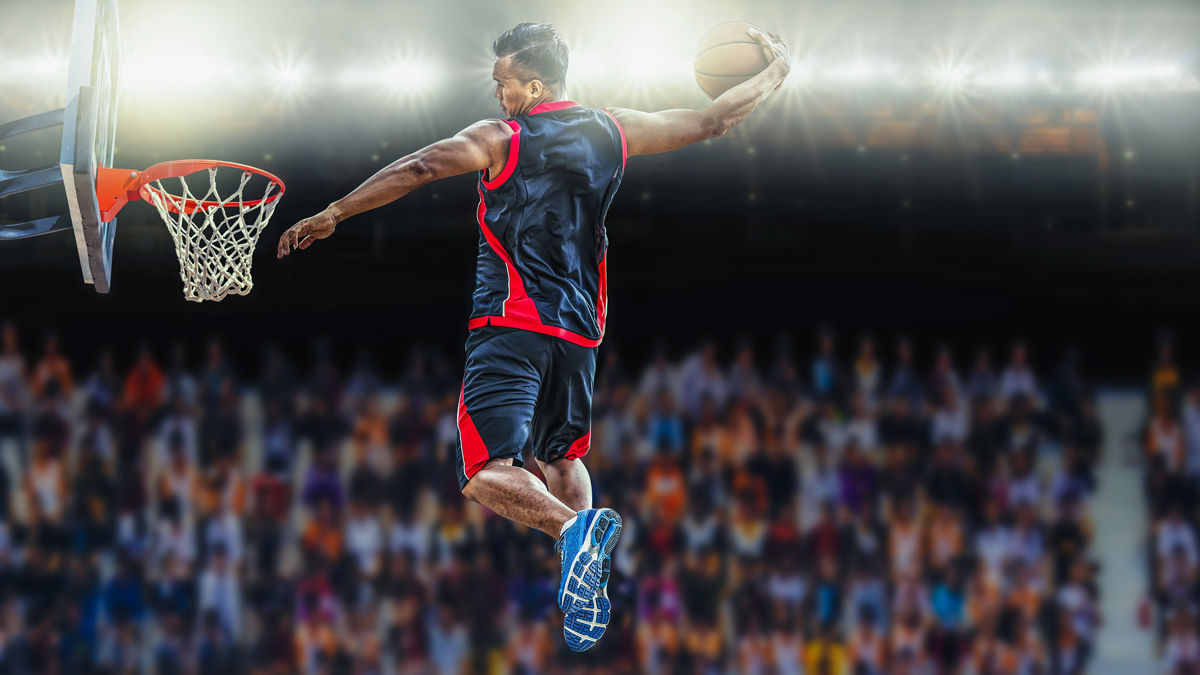
Perhaps you have a dream of soaring through the air like LeBron James or legendary player Michael Jordan. If this is you, whether you are underweight, overweight, or average, this post will help you improve on your vertical jump. The same training principles can apply to everyone, regardless of what their weight is. An increase in the vertical jump is perhaps the most critical development milestone for any basketball player. The internet is littered with thousands of articles containing wrong information on how to improve your vertical jump. While it can be overwhelming to understand which training strategy works best, there are several ways to achieve your goal. This post shares some general principles that will help you increase your vertical jump and become a top athlete.
1. Build Muscle, Lose Fat
If you don’t want to lower your performance and wreck your basketball career: don’t gain fat. Losing fat has been proven to help athletes improve their performance. You should first understand that losing fat and losing weight aren’t the same. This is why you should try out various training programs since working with a fitness professional will help you on your weight-loss journey. Ideally, muscle loss and water loss may account for an athlete’s in-season weight loss compared to actual fat reduction. Even though it’s familiar, it’s not ideal. Since diet plays a central role in all this, you will need to adhere to a useful nutrition guide. Remember: this takes excellent planning and commitment, so put in the required effort.
2. Mental Training
These are the exercises that are focused on your mind. Increasing your vertical height isn’t something that’s going to happen overnight. This means you need to stay mentally healthy during the entire period. One critical element to factor in is visualization. You need to visualize how you want to jump. Think about your form, your arms, steps, and how high you plan to jump with all the effort you’re putting in. You will also require confidence in yourself but also in the process. The time you’re putting into the mental and physical training will eventually pay off – and you need to have confidence in that.
3. Bulgarian Split Squats
In training and on the court, your legs offer you the power to jump higher. This exercise will help you build strength while increasing your balance. To practically do it, stand a few paces away from a bench, and place your non-active leg on it. Ideally, you want the top of your foot to be on the bench. Hold a dumbbell that you can manage in each hand and stand firm with your chest up. Descend to the ground until your back knee lightly touches the floor. Using the heel of your active foot (the one on the floor), push yourself back up to a standing position. Start by doing four sets of 10 reps on each leg on your lower-body workout schedule.
4. Rebounding
This is a type of aerobic exercise that is performed on a mini-trampoline. Rebounding offers a great way to experience the thrill of jumping and being midair while putting minimal stress on your joints. There are many trampoline exercises you can try if you’re interested in rebounding. Spend some time on each activity or try focusing on specific training for a more extended period. You can also combine this with a jog to help you get comfortable on the trampoline.
5. Be Flexible
Flexibility is another critical factor when it comes to increasing your vertical jump. Being flexible enough helps you get into the correct position and go into the full range of motion when you jump. If you’re not flexible enough, this can lower your vertical jump potential. Additionally, flexibility also helps prevent typical injuries during training and playing. Some of the best ways to improve flexibility and curb injuries are through static and dynamic stretching.
6. Squats
For this kind of exercise, you use the power of your hips, torso, and hips to jump explosively. After you’ve mastered the art of jump squats, you can proceed to try doing weighted squat jumps using a trap bar, barbell, or a pair of dumbbells. To do this:
- Start with the bar at the back of your head resting on your neck, or try incorporating dumbbells.
- Start by lowering your body to a squat, but when rising, ensure you explode and jump up.
- Maintain some balance when landing, and be sure to land on both feet.
The benefits of increasing your vertical jump as a basketball player cannot be overstated. It offers you a competitive advantage in getting more rebounds, blocking shots, and creating more turnovers. The latter means you can jump up and steal those passes that opponents try to make over you. We hope the tips above will help take your vertical jump to the next level.




